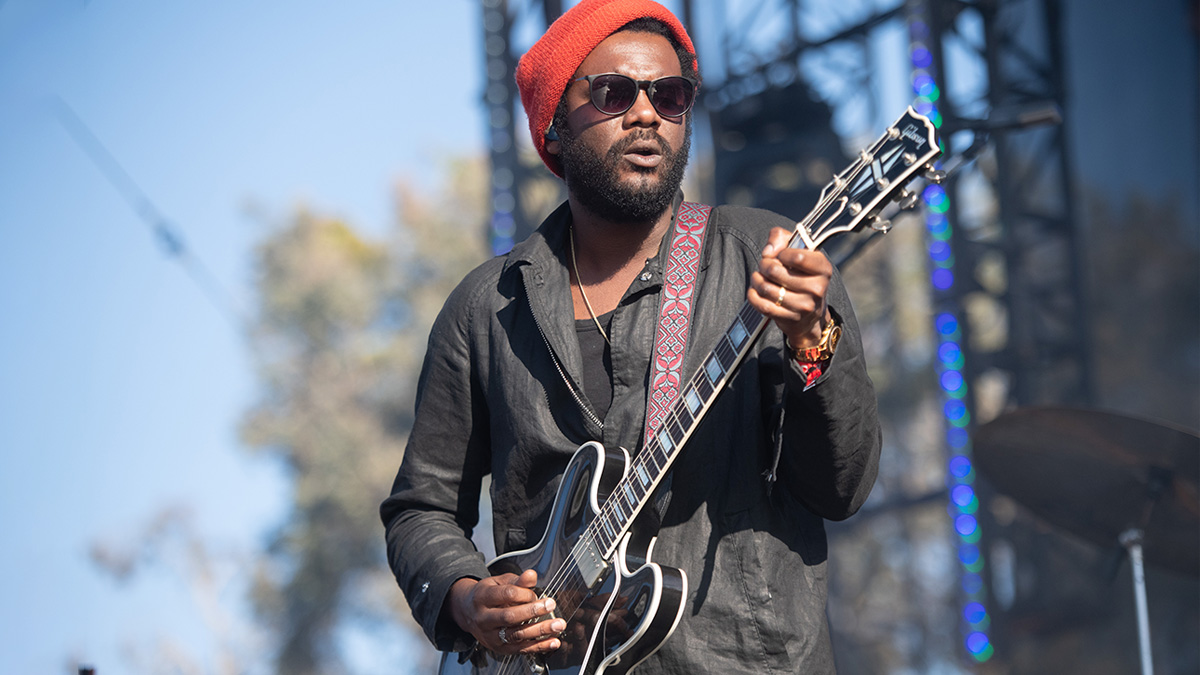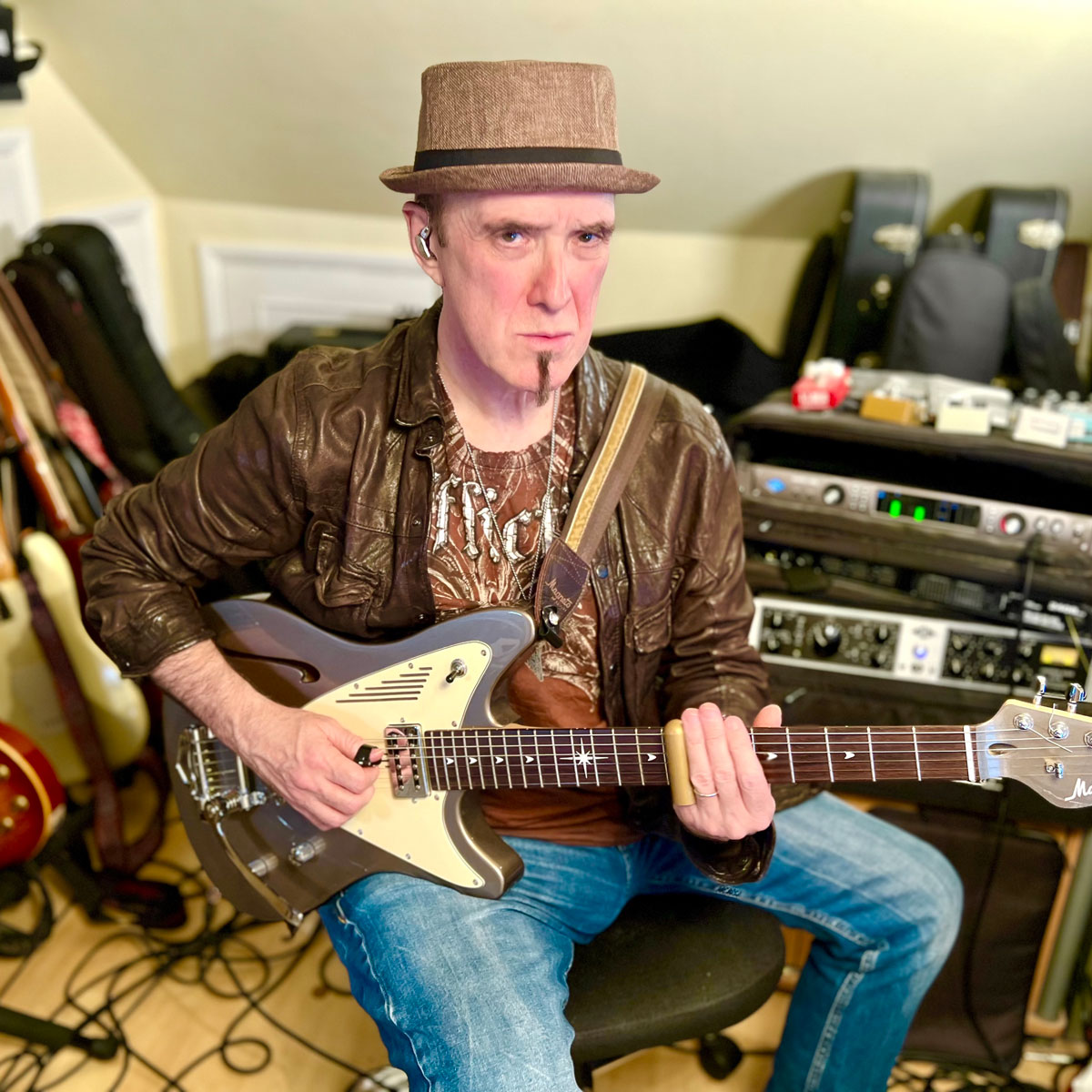Gary Clark Jr. is responsible for some of contemporary blues’ tastiest solos – here’s what you can learn from his approach
How the Austin, TX, genre polymath's signature style can modernize your blues leads

This column focuses on Texan blues guitarist, Gary Clark Jr, born in Austin, in 1984. Early on in his career Gary was seen primarily as a blues artist with some rock influences.
But over time, he has integrated diverse styles, from soul and R&B right up to hip-hop. A great example of the latter is his performance of This Land with The Roots at the 62nd annual Grammy awards. Gary employs a second guitarist when he plays live, so he can be free to sing and play fills without losing the groove.
Clark’s style has deep blues guitar roots regardless of the genre that he’s occupying. His Next Door Neighbor Blues has a great old-time feel, which calls to mind Robert Johnson and the best solo blues players. He’s also one of those rare guitarists that seems to sound pretty much the same regardless of the instrument he chooses.
This is because the way he plays is so defined and the guitar is generally complemented by a great rhythm section. On top of this his records are very well produced and it’s easy to see why he is proving to be one of the most popular current blues artists. So much so that he’s worked with the late B.B. King, The Rolling Stones, and has also been invited to play at Eric Clapton’s Crossroads Festival, and to open shows for Slowhand.
In our examples we’ll see a range of the techniques that Clark employs, put together in a final piece. Our first idea features a unison bend, a technique that Gary uses a lot and is often in no hurry to let the bend go. Another ear-catching ploy is to slowly bend from one note to another, bringing exciting tension to his solos.
While Clark is steeped in the styles of Albert King, Jimi Hendrix and the Delta blues players, he also has some modernistic traits. One of these is the repeated use of the 9th degree over minor 7th chords.
This is common among the current crop of blues players and adds a slightly jazzier twist. Gary often adds this interval to the minor pentatonic scale. In fact, he probably uses the minor pentatonic with added 9th interval even more than he does the blues scale.
The chord progression for the final piece goes to the Vm rather than a V7, since Gary sometimes uses this device in his songs. But it’s the phrasing that’s key to understanding his style. His command of all the usual bluesy techniques goes without saying, but the pacing of his solos and how he shapes them, is one of the many reasons why Gary can hold a festival crowd in the palm of his hands.
Get the tone
Amp Settings: Gain 6, Bass 7, Middle 4, Treble 6, Reverb 4
Gary uses humbucker and single-coil pickup equipped guitars (often P-90s), so either will work fine here.
An American-style amp sound works best for this style – think Fender combo amps. Fuzz is also a huge part of Gary’s sound, but he also uses overdrive pedals and other assorted tone shapers. Reverb is essential, too, while delay adds welcome breadth to the tone.
Example 1
This idea starts with a unison bend, shortly followed by movement from the 9th (B) to the b3 (C) of Am7, which helps to state the harmony.
Example 2
This line features classic blues bends, and again we make use of the 9th degree. Phrasing is key here, as Gary plays lines that already sound like classics.
Example 3
For this minor pentatonic-based line, the first two beats of bar two are developed as a motif, and this sense of development adds cohesion to a solo.
Example 4
We start with a stinging jump from the b7 (D) down to the (B) 5th of Em7. You have to be quick with the position shift to the last note of bar two.
Example 5
This example starts with a classic Albert King/SRV-type idea. As with many A minor pentatonic-based lines, Gary might use the 9th (B) to spice up the sound.
Final solo
The solo combines four of the previous examples to follow the chord sequence, which is based on four bars of Am7 followed by four bars of Em7.
Get The Pick Newsletter
All the latest guitar news, interviews, lessons, reviews, deals and more, direct to your inbox!
A professional guitarist for many years, Andy G Jones has played with Van Morrison, James Ingram, Lamont Dozier, Queen (Brian May and Roger Taylor), Robben Ford, Billy Cobham, John Illsley (Dire Straits), KT Tunstall, Albert Lee (featured on Andy's upcoming CD), Mike Finnigan, Dave Landreth and Ryan Voth from The Bros. Landreth, Malford Milligan, The BBC Radio Big Band, Patti Austin, Hamish Stuart (Average White Band), Lalo Schifrin (Hollywood film composer Bullitt, Mission Impossible), Hank Marvin, James Dean Bradfield (the Manic Street Preachers), Grady Tate, Agnetha from ABBA, Cliff Richard, Dudley Moore, Nathan James (Inglorious), Joey Tempest (Europe) and Kelsey Grammar.











